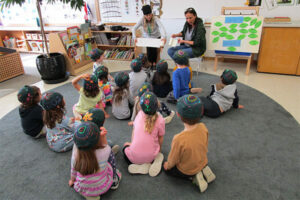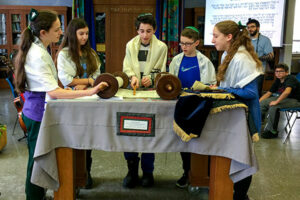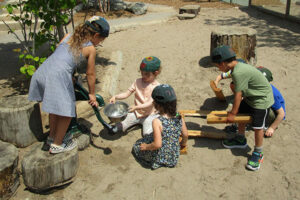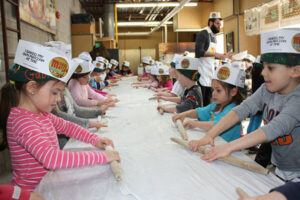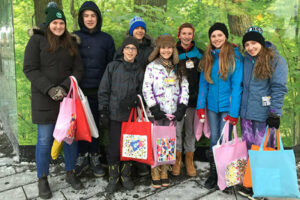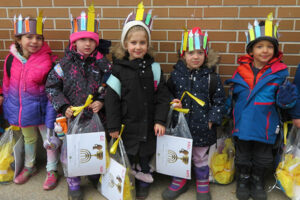Our Grade 1 students recently began studying their third generative topic:
“There is as much in the Hidden as in the Revealed”
“רַב הַנִּסְתָּר עַל הַגָּלוּי, וְרַב הַגָּלוּי עַל הַנִּסְתָּר”
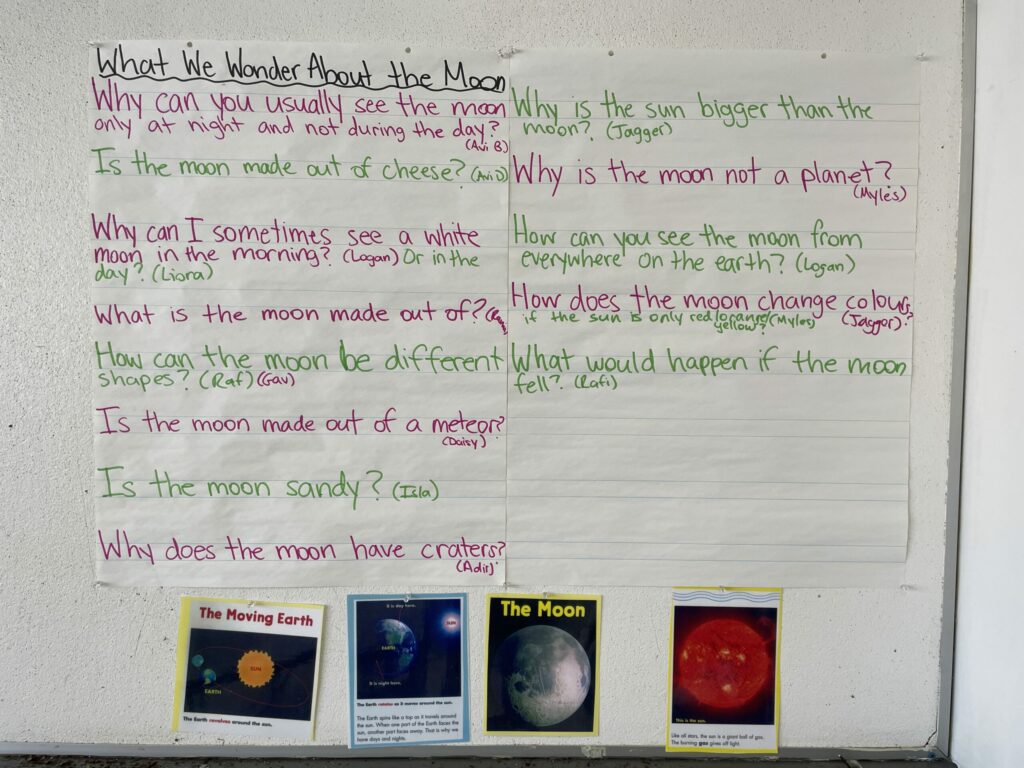
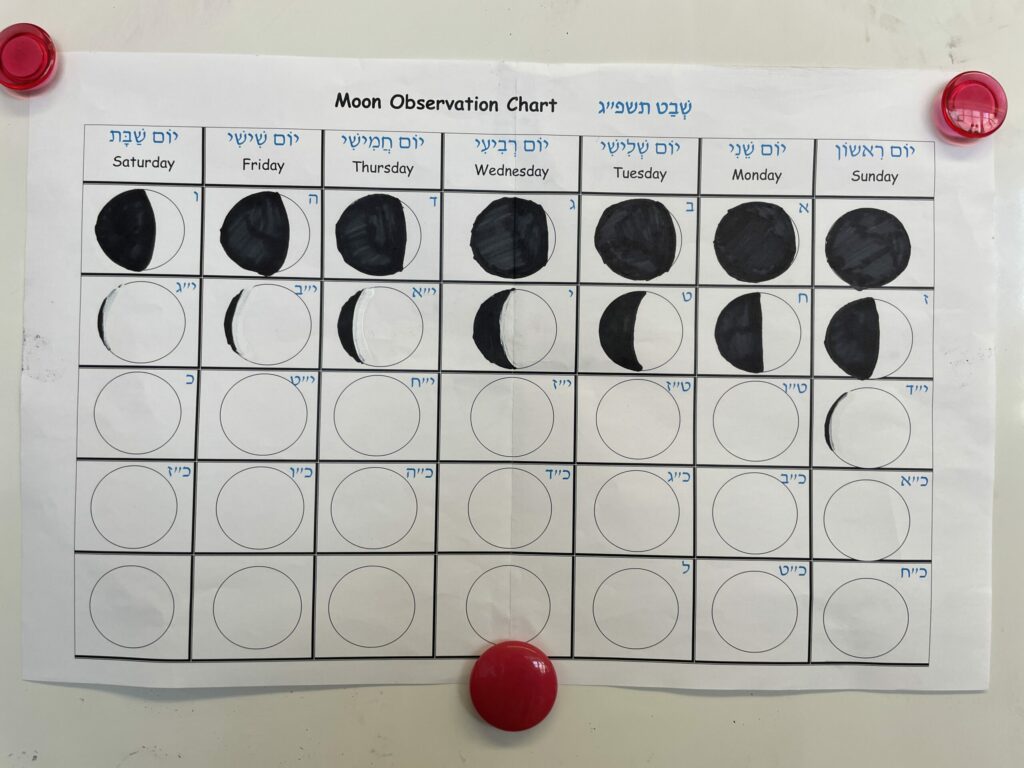
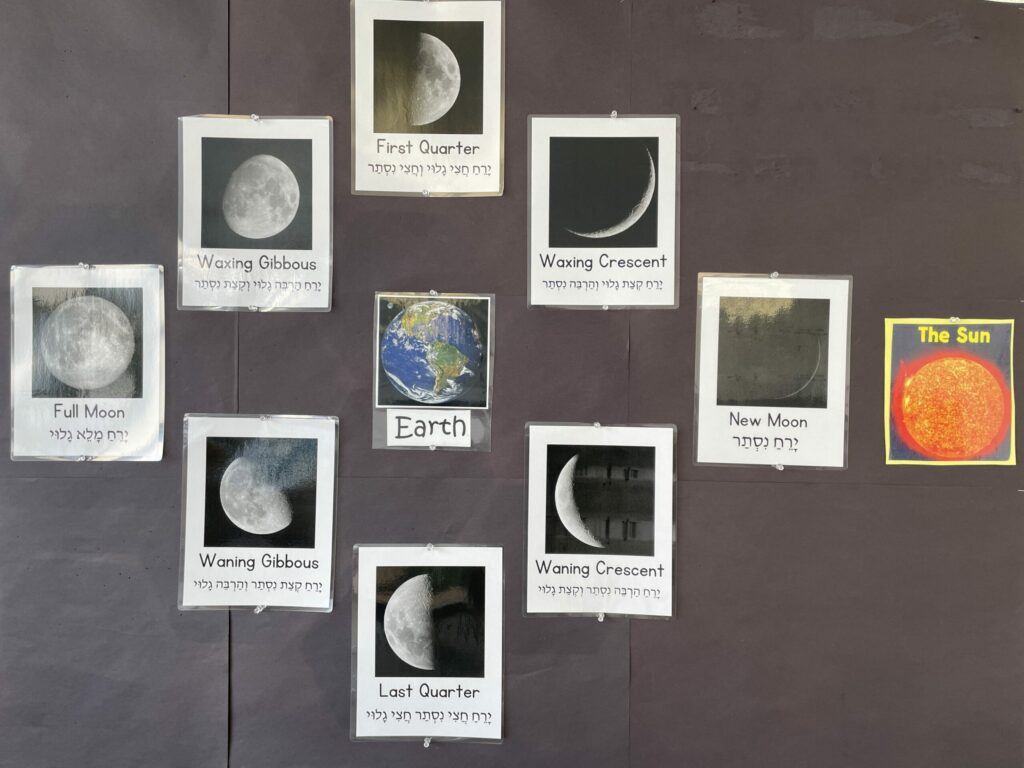
This unit began with an exploration of the moon. The moon guides the Jewish calendar and is a metaphor for this unit. The moon is always present, however, at each phase different parts of the moon are hidden and revealed.
In Language Arts, the metaphor of the moon leads us into our Purim learning which focuses on, “There is more Hidden than Revealed,” emphasizing emotions that are hidden in the Purim Megillah. Students will listen as the teacher reads aloud each chapter in the Megillah. They will then think about the hidden and revealed emotions of the characters. How did the characters feel? What did they reveal? They will look at each character’s hidden feelings and how it might be revealed. For example: When Queen Vashti refused to show off her beauty at the king’s feast, King Achashverosh was furious (hidden emotion) and revealed the way he was feeling by stomping his foot and his face turning bright red.
We will focus on the skill of retelling as the students retell each chapter of the Megillah. Students will use the “show and not tell strategy” as we focus on describing the emotion that each character hides and reveals. For example: Queen Esther felt nervous when appearing in front of the king to let him know that she wanted to invite him and Haman to a banquet. We use the “show and not tell strategy” to describe what Queen Esther reveals; her hands were shaking, and her heart was beating fast.
In SES, they are closely observing the hidden and revealed moon. The students are recording their daily observations and discussing which part of the moon is hidden and which is revealed. They use yellow to represent the revealed moon and black to represent the hidden moon. Students are learning that there are different names for each moon phase such as; New moon, Waxing Crescent, Half Moon, Waning Gibbous and Full Moon. Soon, the students will learn about how the cycle of the moon is connected to time and how a moon cycle creates a Jewish month. In the beginning of a Jewish month, we would see a hidden new moon, whereas in the middle of a Jewish month, we would see a full moon and at the end of the month, we are back to seeing a hidden moon. We have learned that the Hebrew months come together to create a year.
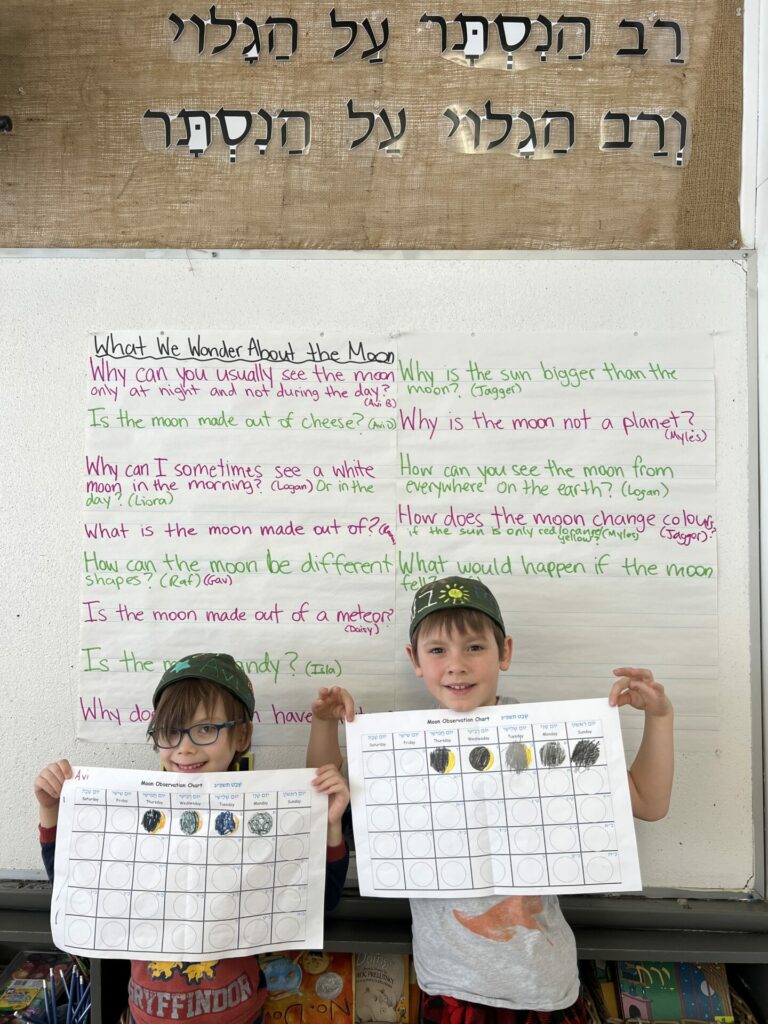
About This Column
“Through the Classroom Window” is an opportunity for teachers to share the inspiring learning that takes place in their classrooms, giving others a glimpse into the heartbeat of the school.
Browse Column Archive
